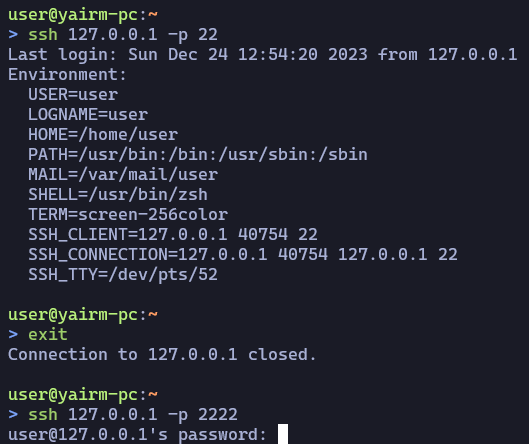Secure Shell (SSH) has become a cornerstone for secure communication over networks, particularly for remote server administration. Despite its robust encryption and secure protocols, vulnerabilities exist, exposing systems to a myriad of attacks. This article delves into the various known attacks on SSH, highlighting their mechanisms, implications, and potential countermeasures.
SSH operates primarily on a client-server model, where the integrity of the communication channel is paramount. Attack vectors against SSH may vary in complexity and execution, but all share a common goal: unauthorized access or data interception. Here are some of the notable attack types:
1. Brute Force Attacks
Among the most common methods of breaching SSH security are brute force attacks. This technique involves systematically attempting a myriad of password combinations until the correct one is identified. Given the computational power available today, such attacks can be executed relatively swiftly.
To mitigate this risk, implementing account lockout protocols or using multi-factor authentication can substantially bolster SSH security. Using complex and lengthy passwords also provides additional layers of difficulty, thwarting brute force endeavors.
2. Man-in-the-Middle (MitM) Attacks
Man-in-the-Middle attacks capitalize on the nature of communications. In this scenario, an attacker clandestinely intercepts and relays messages between two parties who believe they are communicating directly. This can lead to unauthorized access, data disclosure, or manipulation of transmitted information.
To prevent MitM attacks, the use of public key infrastructure (PKI) is pivotal. Verifying the authenticity of key fingerprints upon initial connection can help thwart this threat. Additionally, using SSH keys instead of passwords provides a heightened level of security by ensuring that only users with the private key can connect.
3. SSH Key Attacks
SSH keys, while secure, are not impervious to attacks. Attackers may engage in key theft through various means, including malware, phishing, or even physical access to the device hosting the keys. Once a private key is compromised, the attacker gains unrestricted access to the corresponding SSH accounts.
To alleviate the risks associated with SSH key compromise, regular key rotation and the use of dedicated keys for different sessions or services is advisable. Incorporating passphrases for private keys adds another layer of security.
4. Session Hijacking
Session hijacking occurs when an attacker intercepts a valid session token during an active SSH session. By gaining access to the session, they can perform actions as if they were the legitimate user, which can lead to severe data breaches and system manipulations.
Enabling SSH session timeout and using tools like fail2ban can help mitigate the risk of session hijacking. Furthermore, encrypting session tokens can reduce the chances of successful interception.
5. Reverse Shell Attacks
A reverse shell attack allows an attacker to execute arbitrary commands on a victim’s machine by establishing an outbound SSH connection. This is particularly dangerous as it leverages outbound traffic, which is often less scrutinized than inbound traffic.
To protect against reverse shell vulnerabilities, strict egress filtering can be enforced within firewalls. Monitoring outgoing connections for suspicious activity and employing endpoint detection and response (EDR) solutions can provide additional safeguards.
6. Exploitation of SSH Protocol Vulnerabilities
Various vulnerabilities within SSH protocols themselves may also be targeted. Notable examples include those which may lead to denial of service (DoS) or enable an attacker to bypass authentication protocols altogether. Vulnerabilities such as CVE-2023-48795 highlight the evolving landscape of SSH threats.
Keeping SSH software up to date and conducting frequent vulnerability assessments are essential practices in defending against such exploitation attempts. Regularly patching known vulnerabilities can significantly reduce exposure risk.
7. Reflection and Amplification Attacks
Reflection and amplification attacks exploit SSH’s request-response dynamics to overwhelm a target with unsolicited traffic. Although this type of attack is more common in other protocols, SSH services can be vulnerable when improperly configured.
Mitigation strategies include rate limiting and proper configuration of firewall rules, selectively allowing SSH traffic only from trusted sources to minimize the potential for amplification.
8. Credential Harvesting through Phishing
Phishing attacks targeting SSH credentials often masquerade as legitimate login prompts or administration requests. Users may inadvertently divulge their credentials, granting attackers immediate access to SSH services.
To combat phishing attempts, extensive user education on recognizing fraudulent requests is paramount. Additionally, implementing software solutions that detect and block phishing links can further enhance security measures.
9. Configuration Flaws
Improper configuration of SSH services can introduce numerous vulnerabilities. Default configurations may expose systems to excessive risk, often facilitating unauthorized access if not properly hardened.
Auditing and hardening SSH configurations, including disabling root login, changing default ports, and minimizing the use of legacy protocols, can substantially decrease risk levels.
Conclusion
SSH, while foundational for secure communications, is not impervious to a spectrum of attack vectors. From brute force and MitM attacks to key theft and configuration flaws, the landscape of SSH vulnerabilities requires vigilance and proactive defense strategies. By understanding and addressing these risks, organizations can fortify their SSH implementations and secure their sensitive data against nefarious exploits.









Leave a Comment